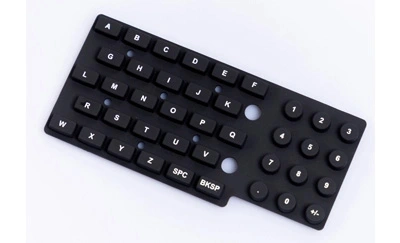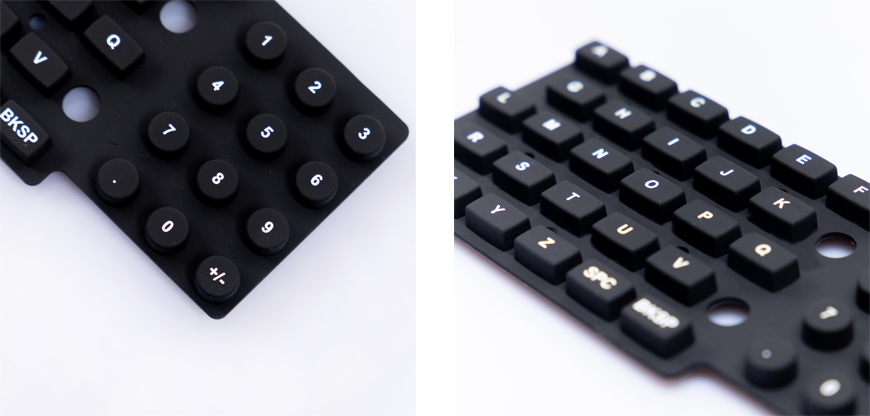
In today's rapidly evolving technological landscape, user interfaces play a pivotal role in ensuring seamless interactions between humans and machines. Among the many innovations in this field, the Matrix Membrane Switch Factory stands out as a key player. This article delves deep into the world of membrane switches, exploring their significance, manufacturing process, applications, and the advantages they offer in various industries.

Membrane switches are thin, flexible, and durable interfaces that are commonly used in electronic devices, appliances, and industrial control systems. These switches consist of multiple layers, including graphic overlays, spacer layers, and adhesive layers, all held together by a flexible membrane. They are known for their versatility, reliability, and cost-effectiveness.
Graphic Overlay: The top layer of a membrane switch, typically made of polyester or polycarbonate, features printed graphics and icons that guide users.
Spacer Layer: This layer separates the top and bottom circuits, providing tactile feedback when pressed.
Circuit Layer: Conductive traces are printed on this layer, allowing electrical connectivity when the switch is activated.
Adhesive Layer: The adhesive layer bonds the membrane switch to the device's surface.
The production of Matrix Membrane Switches is a meticulous process that involves precision engineering and quality control.
Step 1: Material Selection
Choosing the right materials is crucial to ensure durability and performance. Manufacturers select materials such as polyester, polycarbonate, and adhesive compounds based on the switch's intended use.
Step 2: Graphic Design and Printing
Graphic overlays are designed to cater to the device's functionality and aesthetics. Advanced printing techniques, including screen printing and digital printing, are employed to create intricate designs.
Step 3: Circuit Printing
Conductive traces are printed onto a flexible circuit layer using specialized inks. These traces facilitate the flow of electrical signals when pressure is applied to the switch.
Step 4: Layer Assembly
The various layers are meticulously assembled, ensuring that all components align perfectly. Spacer layers are added to provide tactile feedback and enhance user experience.
Step 5: Testing and Quality Control
Each membrane switch undergoes rigorous testing to ensure functionality, durability, and resistance to environmental factors like moisture and dust.
Matrix Membrane Switches find applications in a wide range of industries due to their adaptability and reliability. Some notable sectors include:
1. Medical Devices
Membrane switches are used in medical equipment such as patient monitors, infusion pumps, and diagnostic devices, where cleanliness and ease of use are critical.
2. Industrial Control Systems
In industrial settings, membrane switches are integrated into control panels and machinery, offering operators a user-friendly interface for monitoring and controlling processes.
3. Consumer Electronics
Devices like remote controls, microwave ovens, and washing machines often feature membrane switches for their durability and sleek design.
4. Automotive Industry
Matrix Membrane Switches are used in automotive applications like dashboard controls and infotainment systems, ensuring seamless interaction for drivers.
The widespread adoption of Matrix Membrane Switches can be attributed to the numerous advantages they offer:
1. Durability
These switches are resistant to wear and tear, making them suitable for applications where frequent use is expected.
2. Cost-Effective
Manufacturing Matrix Membrane Switches is cost-effective, making them an economical choice for many industries.
3. Customizability
The design flexibility allows manufacturers to create switches that match the unique requirements of their devices.
Matrix Membrane Switches have undoubtedly revolutionized the way humans interact with machines. Their versatility, durability, and cost-effectiveness have made them an indispensable part of various industries. As technology continues to advance, these switches will likely play an even more significant role in shaping the future of user interfaces.
Are Matrix Membrane Switches waterproof?
Yes, Matrix Membrane Switches can be designed to be waterproof, making them suitable for applications in wet environments.
How long do Matrix Membrane Switches typically last?
Matrix Membrane Switches have a long lifespan, often exceeding millions of actuations, depending on their design and quality.
Can these switches be used in outdoor applications?
Yes, Matrix Membrane Switches can be designed to withstand outdoor conditions and extreme temperatures.
Are Matrix Membrane Switches easy to clean?
Yes, their smooth and sealed surface makes them easy to clean and maintain.
Can I get custom-designed Matrix Membrane Switches for my specific device?
Absolutely, manufacturers can customize Matrix Membrane Switches to meet the unique requirements of your device.